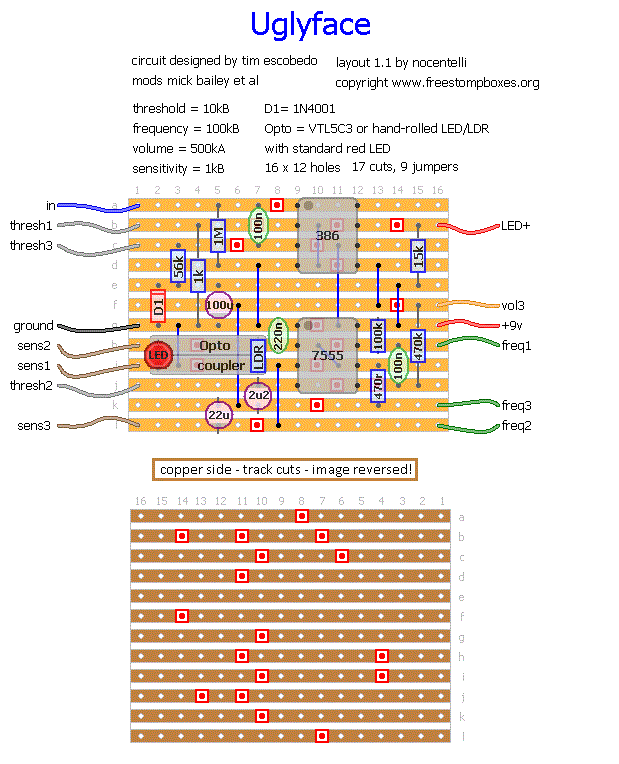After getting frustrated with my DBA Robot build, I decided to move on for the moment. So I slapped together
Tim Escobedo's Ugly Face.
This thing is incredible. So many sounds. Kind of like a Fuzz Factory, but not at all. It can do auto-wah-ish stuff, AMAZING sub-ocatave tracking, fixed-wah, and so much more. All in a blanket of nasty fat fuzz. Plus, it oscillates if you want it to, with a huge pitch range.
I have yet to box mine up. But when I do, its home will be in a shiny new 1590A.
Vero layout attached!
Oh yeah, the layout does not mention it, but:
VOL 2 to OUTPUT
VOL 1 to GROUND
